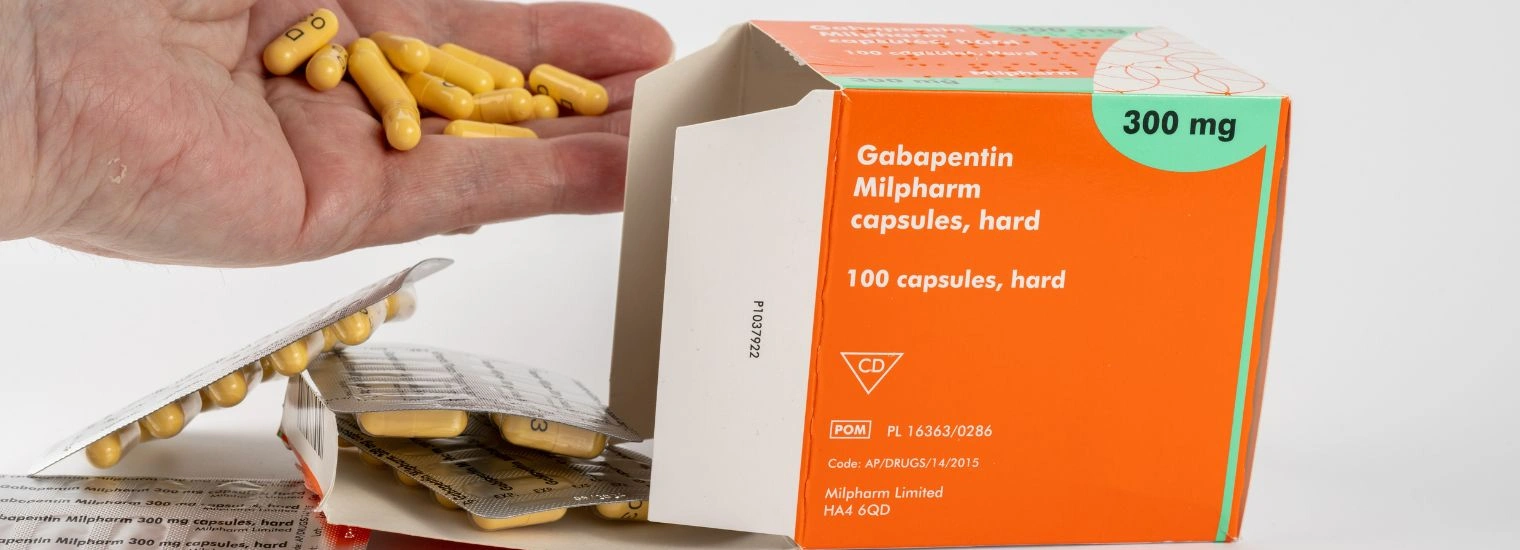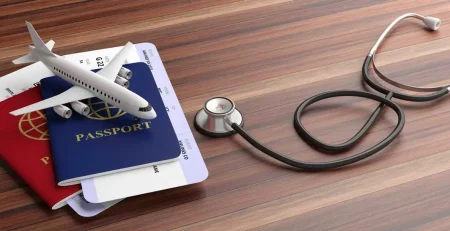Can You Take Gabapentin With Tramadol?
The Realities and Risks of Mixing Tramadol and Gabapentin
Gabapentin and tramadol are two of the most commonly used analgesics today. Even though the co-therapy of gabapentin and tramadol is medically legal, the synergistic effect of these prescription drugs makes it a candidate with addiction potential.
If you suffer from severe and chronic pain, you require pharmacological intervention in the form of painkillers to manage the intense pain, so consulting your healthcare provider is essential. To manage the addiction potential with prescription drugs like this, you can always seek help from Icarus Behavioral Health. But the question remains, ‘Can you take gabapentin with tramadol?’
The Complicated Relationship Between Chronic Pain and Addiction Potential

A combination under trial that is currently growing in recognition is gabapentin and tramadol. Both of these drugs act as analgesics. They treat moderate to severe pain through different mechanisms. They activate the brain’s reward system and develop tolerance, contributing to addiction potential.
There are a lot of considerations regarding the use of combination therapy, including potential interactions, so let us first get through both drugs individually, and then their compatibility, to determine if you can use them together or not.
Gabapentin an Antiepileptic Drug
Gabapentin is an antiepileptic drug that has found its uses as a pain reliever, especially for nerve pain. As an anticonvulsant, the neuroblocking effect of gabapentin is beneficial in managing neuropathic chronic pain. It binds to the brain receptors responsible for releasing excitatory neurotransmitters and reducing convulsions and seizures.
The initial dose of gabapentin is started at 300 mg daily, then it is gradually increased to a maintenance dose of 900-1800 mg, depending on the patient. These days, one of the primary functions of gabapentin is managing pain, usually caused by neurological damage or injury.
All the malfunctioning neurological conditions benefit from the use of gabapentin, including treating restless legs syndrome, diabetic neuropathy, and neuralgia. Since it reduces the release of stimulatory neurotransmitters, it also has a calming effect. Therefore, it also finds its uses as an anti-anxiety and anti-insomnia medication.
Get Proven Detox and Rehab Options at Icarus – Call Now!
Side Effects and Risks Associated with Gabapentin
Gabapentin remains unmetabolized in your body. That’s why it has high levels in your blood during its half-life. If you are already on anti-psychotic medication, you should take gabapentin with precautions and monitor these side effects, along with the correct dosage.
- Fatigue
- Dizziness
- Nausea
- Vomiting
- Blurred vision
- Dry mouth
- Mood disorders
Your healthcare provider should also monitor your current therapy regimen, especially if they are also targeting the same target sites as both tramadol and gabapentin.
Tramadol, an SNRI Opioid

Tramadol, sold under the brand name Tramal, is the most commonly used analgesic in hospitals and post-operative settings among prescription medications. As a selective serotonin and norepinephrine reuptake inhibitor, it increases the level and duration of monoamine release.
This inhibition of the reuptake of serotonin results in an anti-anxiety effect, contributing to mood enhancement. It is metabolized in the liver by the CYP 450 enzyme complex and has a half-life of 6-7 hours.
Moreover, it is also an opioid analgesic, so by binding to the opioid receptors in the brain, it can alter your body’s perception of pain. It causes a reduction in pain by interrupting the pathway between the brain and the site of pain.
The dual action of tramadol makes it the analgesic of choice in moderate to severe pain in musculoskeletal disorders, post-operative pain, and chemotherapy patients. The minimum basic dose is 25mg, while it should not exceed 400 mg per day.
Depending on the type of disease you have, your doctor can prescribe you the required dosage of tramadol.
Side Effects and Risks Associated with Tramadol
Tramadol, though an excellent analgesic and pain reliever, has a fair risk of side effects:
- Dizziness: As tramadol blocks the opioid receptors, it can cause dizziness and loss of consciousness
- Nausea, vomiting, constipation: Tramadol in high doses can result in nausea, vomiting, and constipation, which can aggravate the complications of eating disorders.
- Serotonin syndrome: As tramadol inhibits the reuptake of serotonin, high levels can lead to serotonin syndrome, which can range from mild (fatigue, shivering, diarrhea) to severe (high blood pressure, fever, muscle rigidity, and seizures).
- Dependency: If you don’t have a history of substance dependency, you can develop tramadol dependency.
Get Accredited Treatment Programs at Icarus – Call Now!
Combination of Gabapentin and Tramadol
Since there are different types of pain receptors in the human body, various approaches and combination therapies are used to target the underlying causes of pain management.
Now that you are familiar with the two common pain relievers, gabapentin and tramadol, we can come back to your question: ‘Can you take gabapentin with tramadol?’.
Gabapentin and Tramadol have different mechanisms of action. Combination therapy, especially in eating disorders, has become a topic of specific interest in the medical community. Whether you should take gabapentin and tramadol together or not depends on these pros and cons.
Benefits of Taking Gabapentin with Tramadol

This combination is of specific interest among prescribers and clinicians because of the benefits that it provides:
Complementary Effect
Belonging to different pharmacological classes, they act on different targets. Gabapentin is prescribed to reduce neuropathic pain, resulting from nerve damage or neurological malfunction. On the other hand, tramadol binds to opioid receptors, reducing musculoskeletal and inflammatory pain. Combining these 2 drugs will provide a complementary effect and relieve you of mixed types of pain from different diseases.
Lower Doses due to Synergism
As gabapentin modulates neurological pain perception, combining it with tramadol helps reduce opioid doses. Lower doses of tramadol lead to fewer side effects and lower chances of serotonin syndrome associated with opioid overdose. Moreover, combining the 2 analgesics allows flexible dosing and medication frequency.
Long-term Effects
During clinical trials of the use of gabapentin with tramadol, the findings indicated that the combination of these drugs has longer efficacy and extended periods of pain relief as compared to single drug use, but also raises concerns for gabapentin overdose. That’s why you can use this combination if you require prolonged pain relief.
No Drug-Drug Interaction
Unlike other drug combinations, gabapentin and tramadol have no drug-drug interaction at least at the metabolic level. Tramadol is metabolized by the CYP 450 enzyme system. Many CNS drugs have inducing effects on this enzyme system, but gabapentin has no significant inducing or inhibiting effect, which is why it doesn’t interfere with the action of tramadol.
Risks and Complications with Using Gabapentin and Tramadol

There are several risks and complications associated with combining tramadol with gabapentin. Here are some the main concerns you should keep in mind if you or someone you know is mixing these drugs:
Overdose
The overdose of tramadol and gabapentin is a serious medical emergency that requires immediate intervention. The signs of a gabapentin/tramadol overdose are:
- Severe sedation due to synergistic effects of analgesia
- Respiratory depression resulting in hypoxia
- Loss of consciousness
- Muscle weakness due to CNS depression
- Fluctuation in Blood pressure and heart rate
- Nausea or vomiting due to gastrointestinal distress
CNS Depression
Synergizing the effect of tramadol and gabapentin will result in synergized CNS depression. The CNS depression will make you dizzy, and cause motor coordination loss. If you have low body weight or electrolyte imbalance, these conditions can aggravate and become fatal.
Respiratory Distress
The respiratory center in the brainstem receives very low stimulatory signals, which cause a reduction in the breathing rate. Poor respiration and low oxygen intake will result in hypoxia. Longer periods of hypoxia make your vital organs, like the brain, heart, and kidneys, to malfunction.
Weight Gain and Obesity
Gabapentin is an excellent choice for analgesia in eating disorders, especially when considering the side effects of tramadol. But when combined with SNRIs like tramadol, it causes weight gain, which might be distressing if you are conscious about weight changes.
Lowering of Seizure Threshold
Even though both drugs are analgesic, they can reduce your seizure threshold. Their combined effect will reduce the action potential required to stimulate your central nervous system, and you will experience seizures more often and more commonly.
Malnutrition and Metabolism
If you are suffering from an eating disorder, the liver and kidney functioning might be compromised. Tramadol is metabolized in the liver, and gabapentin is metabolized in the kidneys. If any of these organs is compromised, it can cause toxicity of either one or both of these drugs.
Gabapentin and Tramadol Monitoring and Mitigation

Gabapentin and tramadol are a new and interesting combination of medicines, but they require close therapeutic dose monitoring. It is important to monitor the toxicity of doses and interactions with other drugs. You must closely monitor these parameters yourself or consult a healthcare professional.
Professional Consultation
Neither tramadol nor gabapentin has a narrow therapeutic index, but you should still seek the opinion of a professional on dose monitoring, toxicities, and interaction with other medications.
Monitor Breathing Rate
Respiratory distress is one of the biggest concerns to manage with both gabapentin and tramadol, particularly due to the risk of central nervous system depression. You should always keep an oximeter with you to ensure proper breathing rate and oxygen saturation levels. If you have any kind of respiratory syndrome, avoid taking these medicines together.
Dose Titration/ Gradual Dose
In the combination therapy of gabapentin and tramadol, start with low doses. At low doses, you will experience fewer side effects. But it will allow you to asses tolerance. Once you find a safe therapeutic window, then gradually start titrating the dose until you achieve the desired effects.
CNS Depressants and Alcohol
Both gabapentin and tramadol have CNS inhibitory effects. The synergism results in very diminished CNS activity. You should be very careful about not using any substances or medications that inhibit or depress the malfunctioning central nervous system.
Alcohol is one of the major contraindications with these drugs. When mixing alcohol with drugs like gabapentin and tramadol The CNS would be depressed so much that your brain might shut down, which could lead to coma or even death.
Other Drug-Drug Interactions
You should avoid taking tramadol with other opioid medications to avoid addiction potential. Medications like fluoxetine or paroxetine, inhibit CYP2D6, potentially increasing tramadol levels and side effects.
Up To 100% of Rehab Costs Covered By Insurance – Call Now!
Should you use Gabapentin with Tramadol?
We have discussed gabapentin and tramadol individually as well as in comparison. The combination of gabapentin and tramadol has legal medical uses. But the question remains the same: should you use this combination or not?
The answer is Yes. Yes, you can use gabapentin with tramadol. But you should be careful with the synergistic effects. If other treatment options are available with a safer profile, consider them first. Blood levels and side effects should be monitored at all times.
Find the Help You Need at Icarus Behavioral Health New Mexico

Gabapentin and tramadol are a powerful combination for treating neuropathic pain since they can be used simultaneously and frequently produce synergistic pain relief. However, this does not mean their combined use comes without risks.
To maximize treatment results, watch for any potential adverse effects and consider specific client characteristics, such as gender and long-term use, when making decisions. A healthcare professional should always be consulted before beginning a new pharmaceutical regimen.
In case of addiction potential, remember help is available. Contact Icarus Behavioral Health to join the fight against addiction to prescription drugs.













